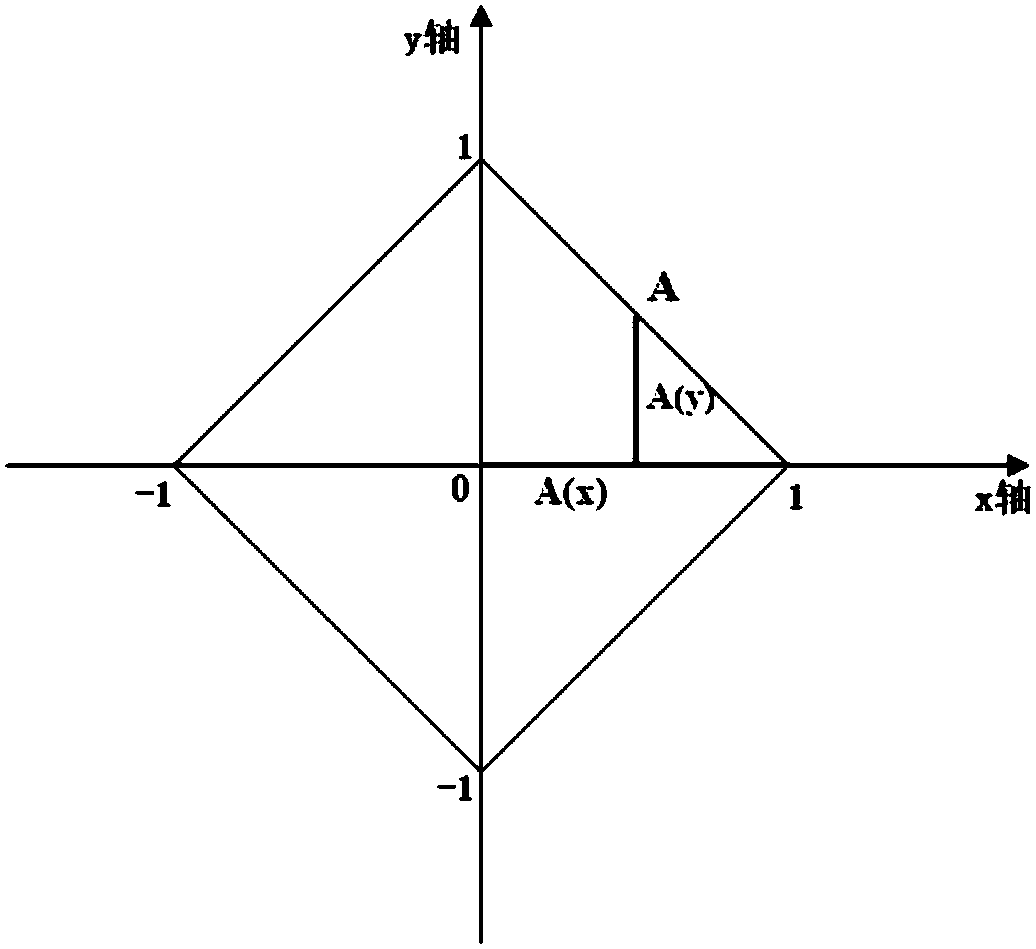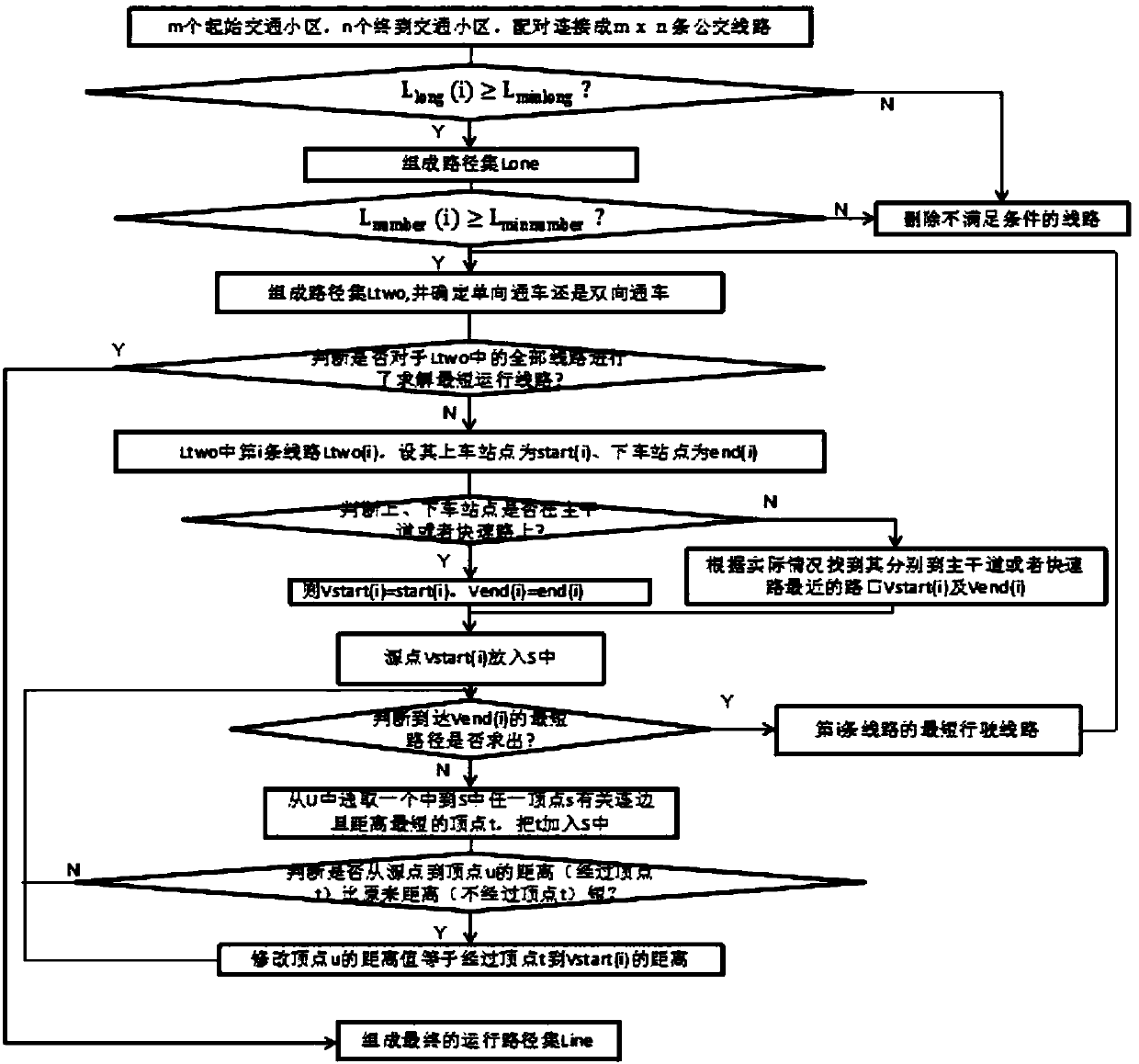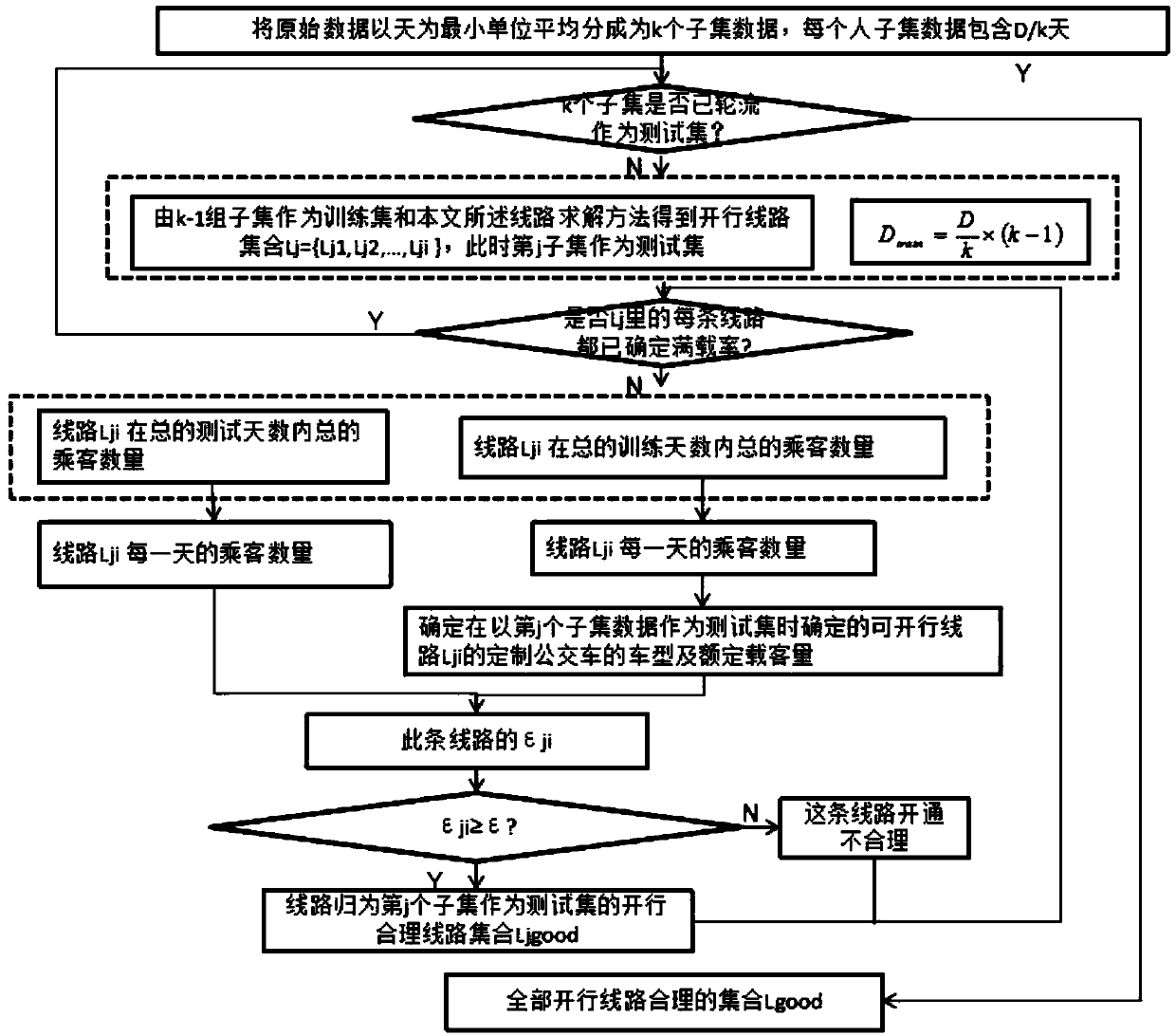Taxi GPS big data-based customized bus line planning method
A technology for determining bus routes and methods, applied to the determination of alighting stations, customizing bus traffic areas and on-board areas, and can solve problems such as increasing the time required for passengers to travel and reducing the efficiency of bus travel
- Summary
- Abstract
- Description
- Claims
- Application Information
AI Technical Summary
Problems solved by technology
Method used
Image
Examples
Embodiment 1
[0162] Such as Figure 4 As shown in Fig. 1, select a certain area in Shenzhen to divide the customized bus traffic districts in the Arcgis software in GIS. Because the custom-made bus is a kind of bus and has direct access, the acceptance range for passengers to arrive at the boarding station will be relatively large. Here, if a=1000 meters, there are 76 traffic districts in total, respectively labeled 1-76, The getting on and off site of each traffic area is its center.
Embodiment 2
[0164] Select the GPS data of taxis from 7:30 to 8:3 on a working day in Shenzhen to get the number of passengers getting on and off in these 16 traffic districts, and then plan the customized bus routes corresponding to single stations. Such as Figure 5As shown, choose as many urban expressways and main roads as possible. For Shenzhen City, urban expressways, expressways, national roads, provincial roads and county roads are mainly considered. Therefore, paired connections form 256=16×16 bus lines, L(i) is the i∈{1,2,...,256} bus line, the boarding station is start(i), and the getting off station is end( i). According to the relevant provisions of the "Code for Planning and Design of Urban Road Traffic", the main line length of urban trams and buses should be 8-12 km, so the minimum line length is set as L in this paper. minlong = 12km, then there is the line L(13) from the 1st cell to the 13th cell, the line L(14) from the 1st cell to the 14th cell, and the line L(14) fro...
Embodiment 3
[0169] Select the taxi GPS data from 7:30 to 8:30 on a four-day working day in Shenzhen to obtain the number of passengers getting on and off in 16 traffic districts and the line L(13) from the first district to the 13th district. Line L(15) from the 1st cell to the 15th cell, line L(16) from the 1st cell to the 16th cell, line L(64) from the 4th cell to the 16th cell These four customized bus lines are evaluated to see if their operation is reasonable. A total of D = 4 days of data, the original data is divided into k = 2 subsets of data in the smallest unit of day, each subset of data contains sky.
[0170] When the first subset of data is used as the test set, the second subset is used as the training set. At this time, the set of open lines L is obtained from the training set. 1 ={L 1,13 , L 1,15 , L 1,16 , L 1,64} and each line in D train = the total number of passengers within 2, and combined with the passenger car seat layout specifications and principles, the m...
PUM
 Login to View More
Login to View More Abstract
Description
Claims
Application Information
 Login to View More
Login to View More - Generate Ideas
- Intellectual Property
- Life Sciences
- Materials
- Tech Scout
- Unparalleled Data Quality
- Higher Quality Content
- 60% Fewer Hallucinations
Browse by: Latest US Patents, China's latest patents, Technical Efficacy Thesaurus, Application Domain, Technology Topic, Popular Technical Reports.
© 2025 PatSnap. All rights reserved.Legal|Privacy policy|Modern Slavery Act Transparency Statement|Sitemap|About US| Contact US: help@patsnap.com



